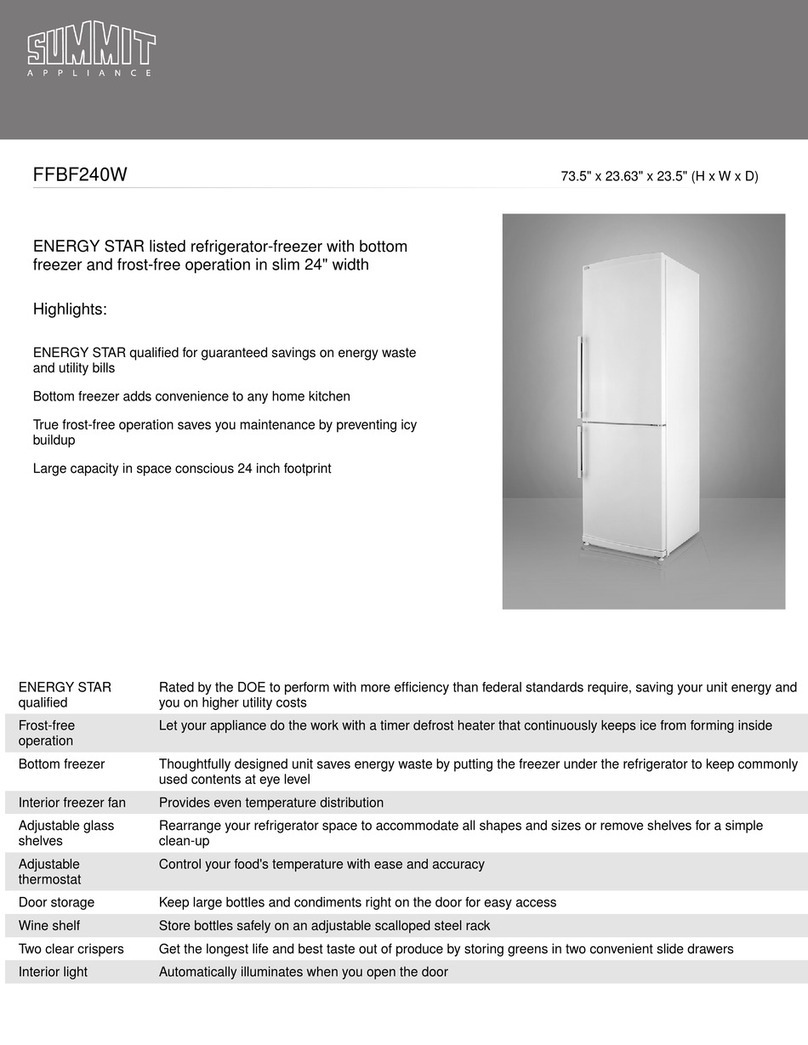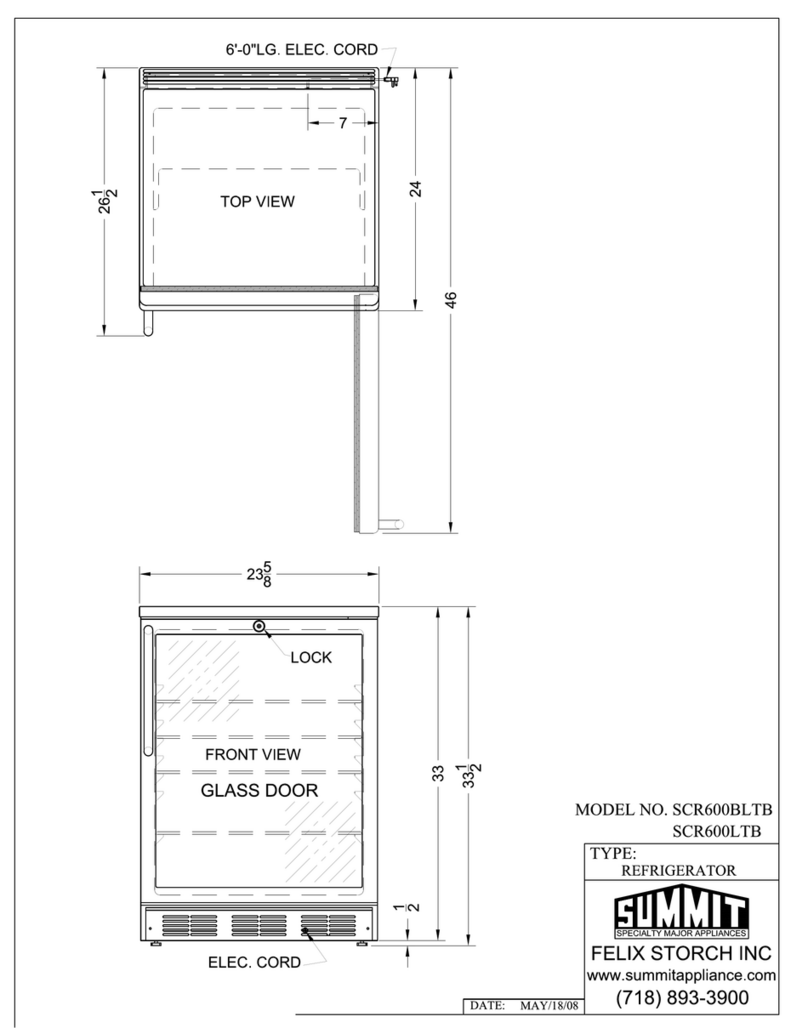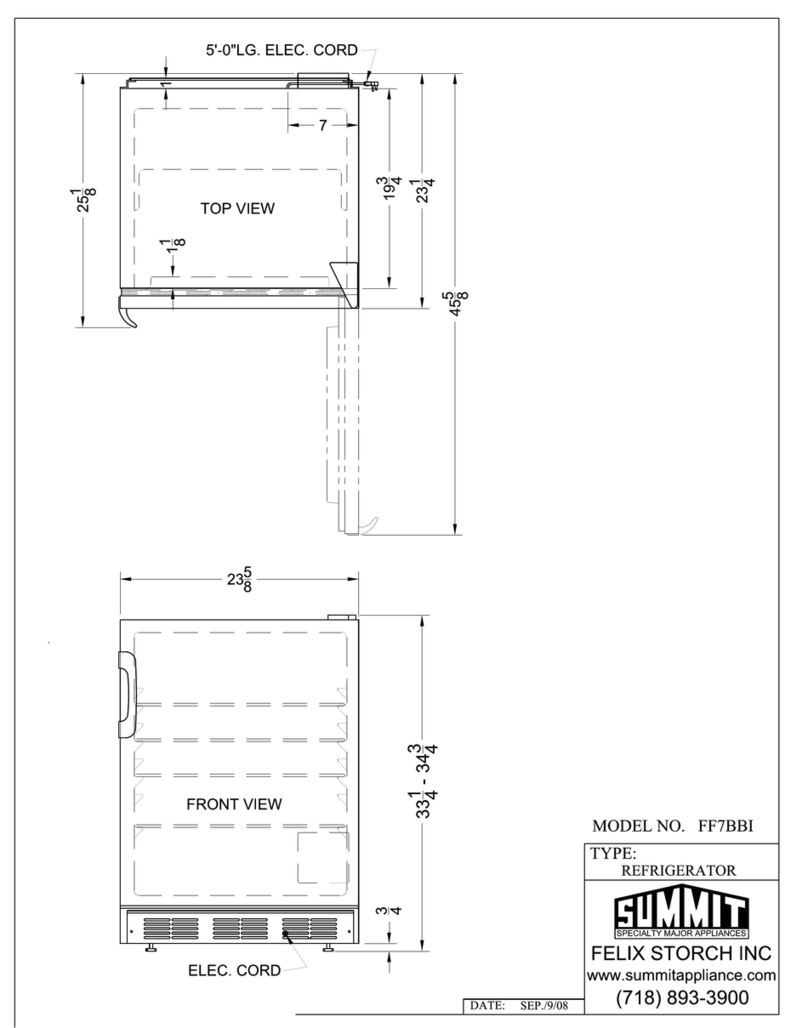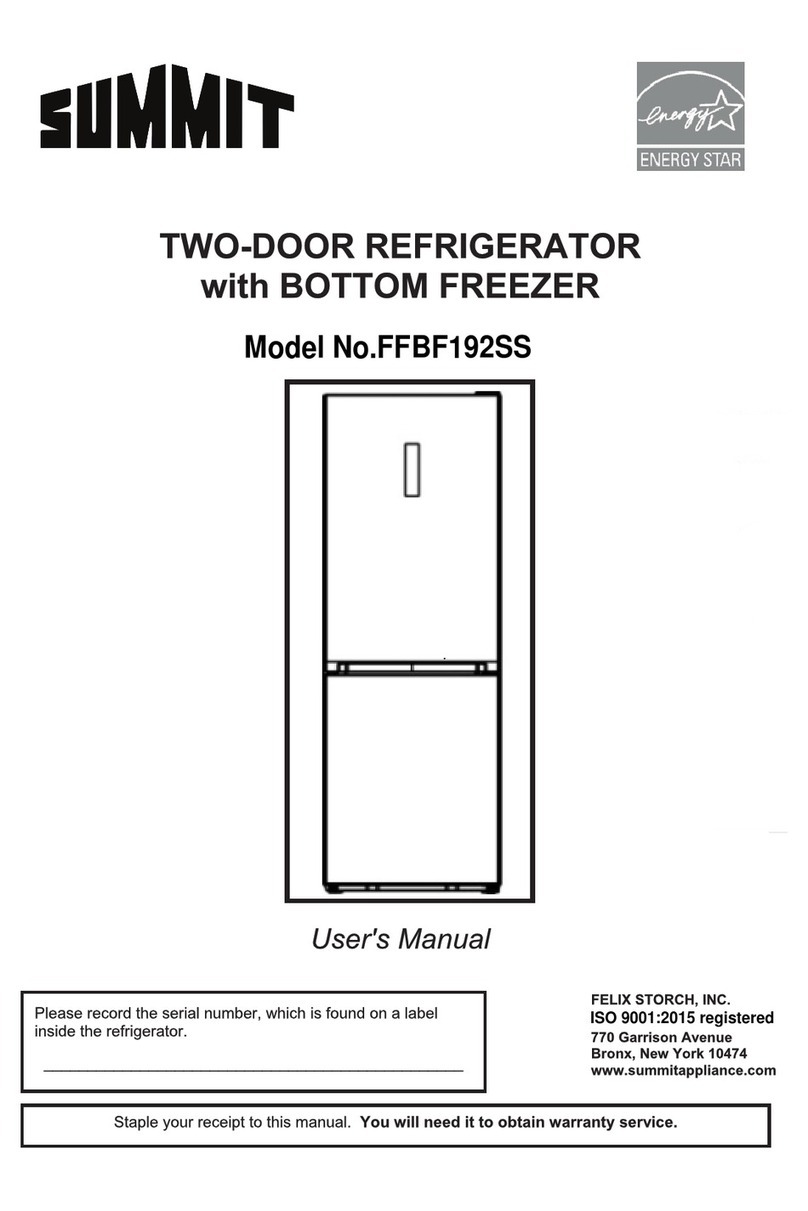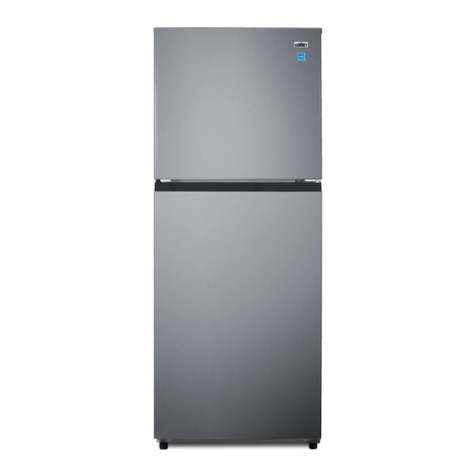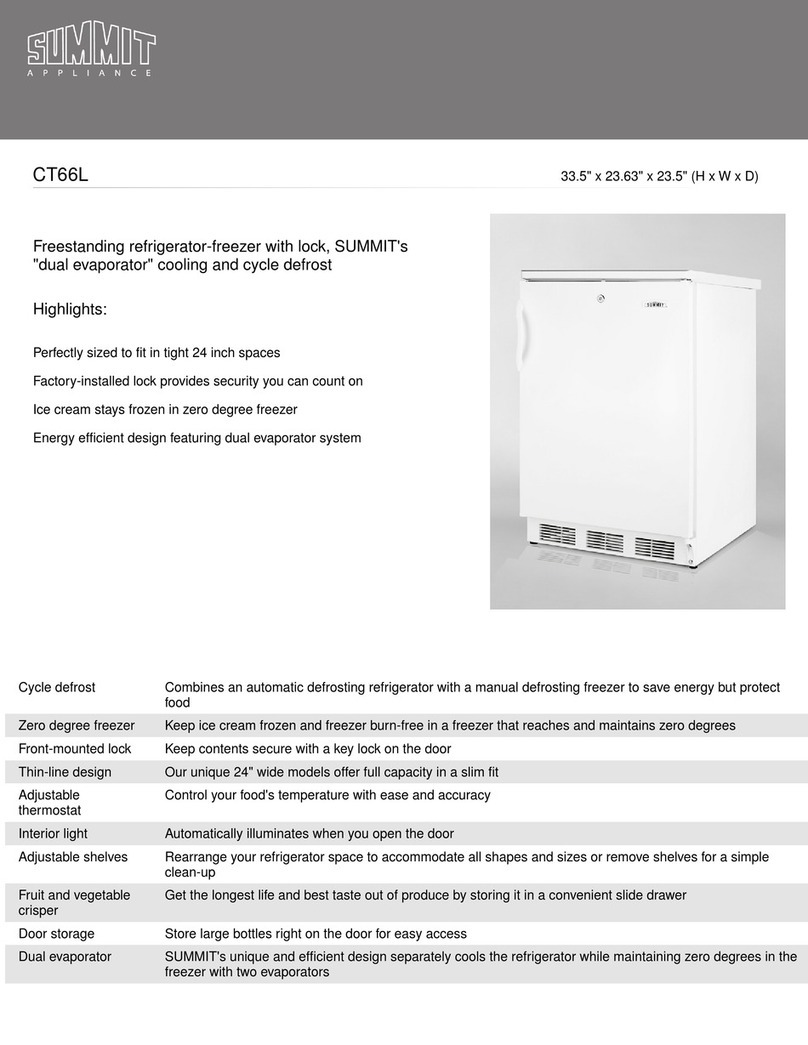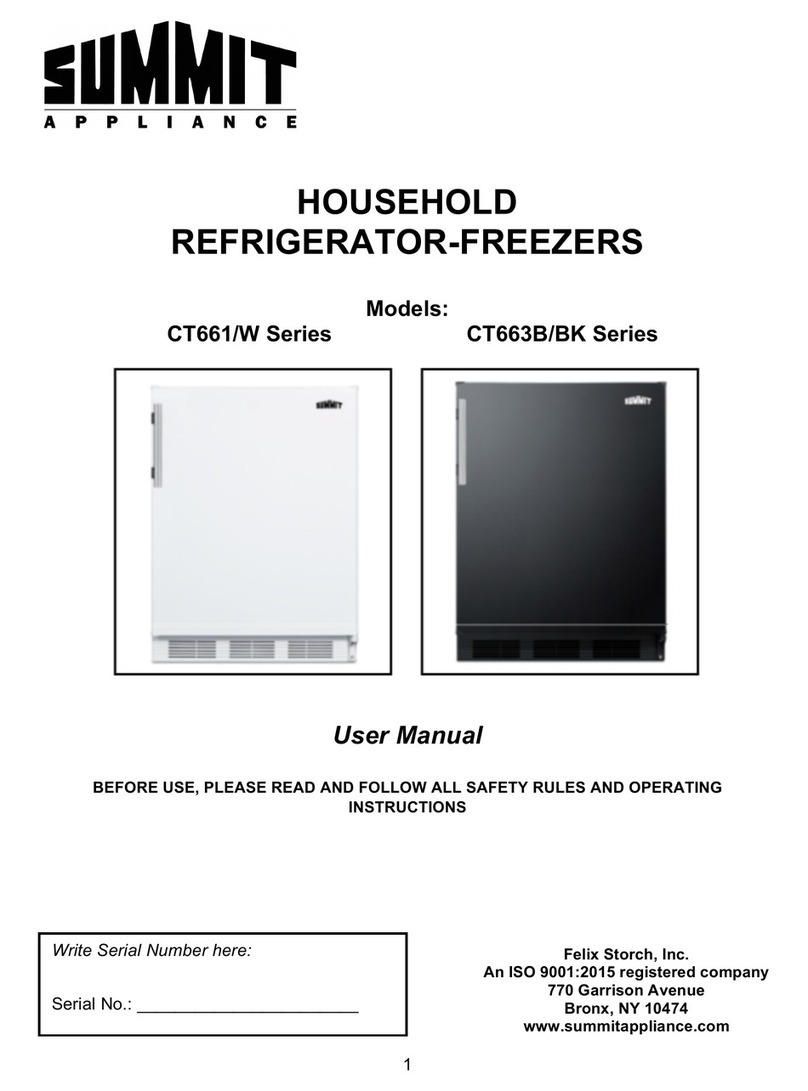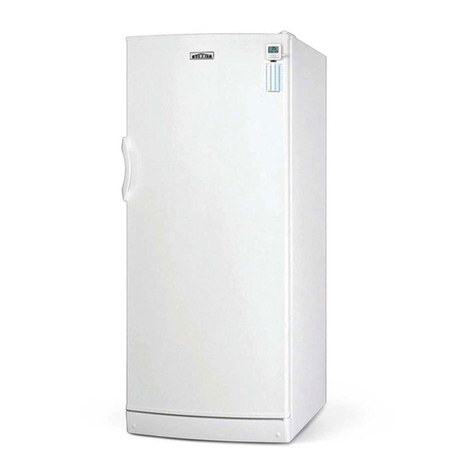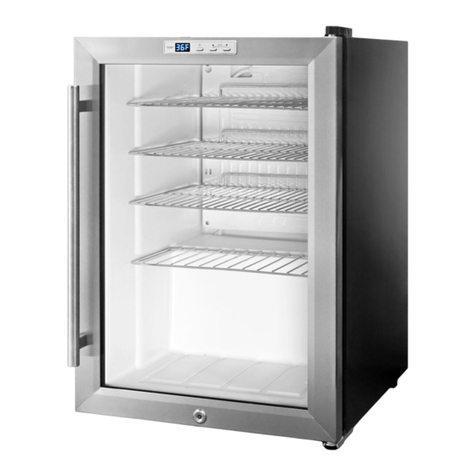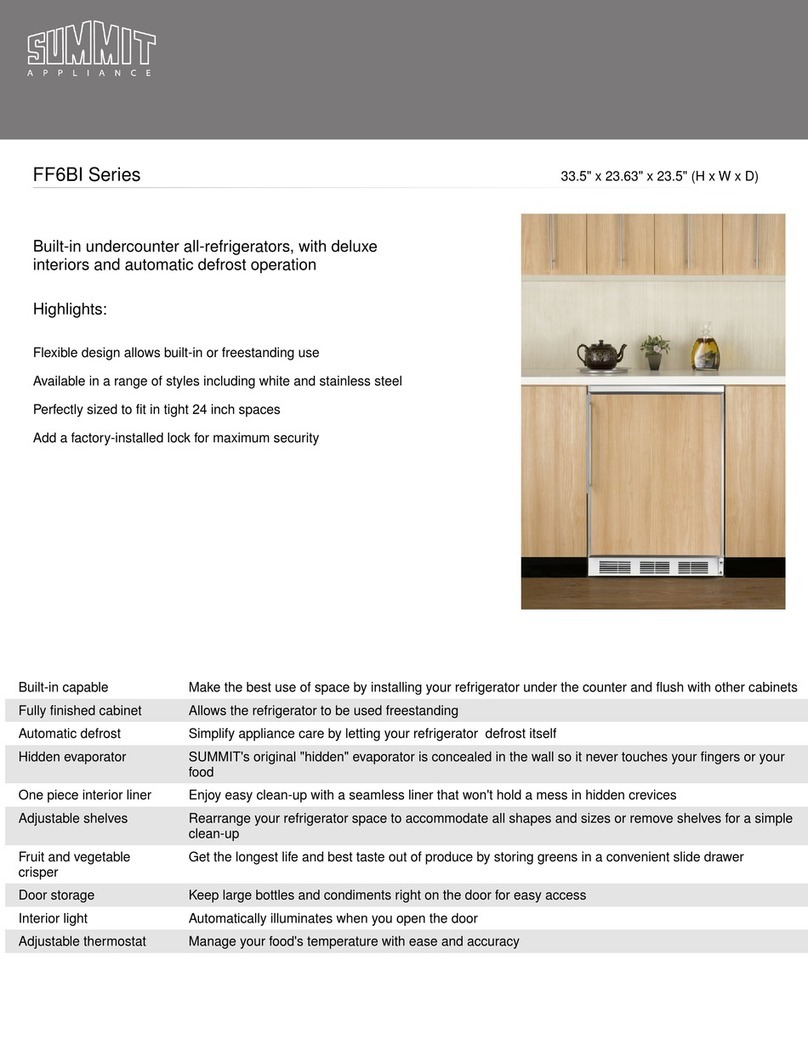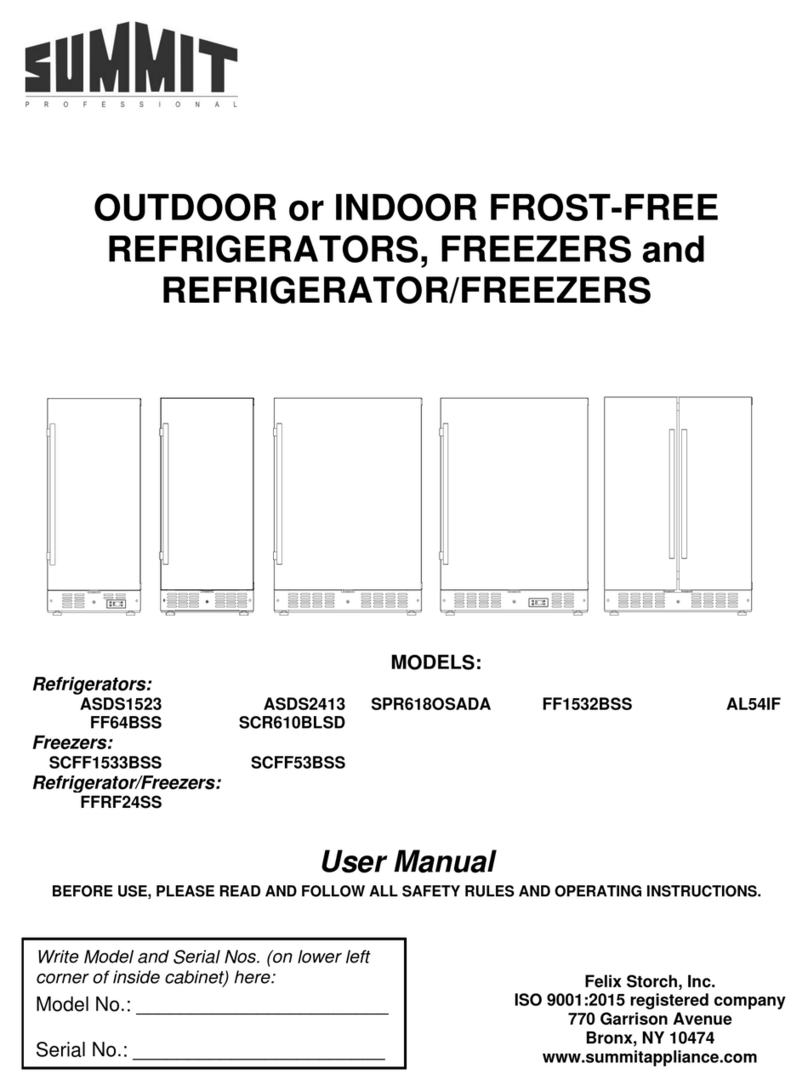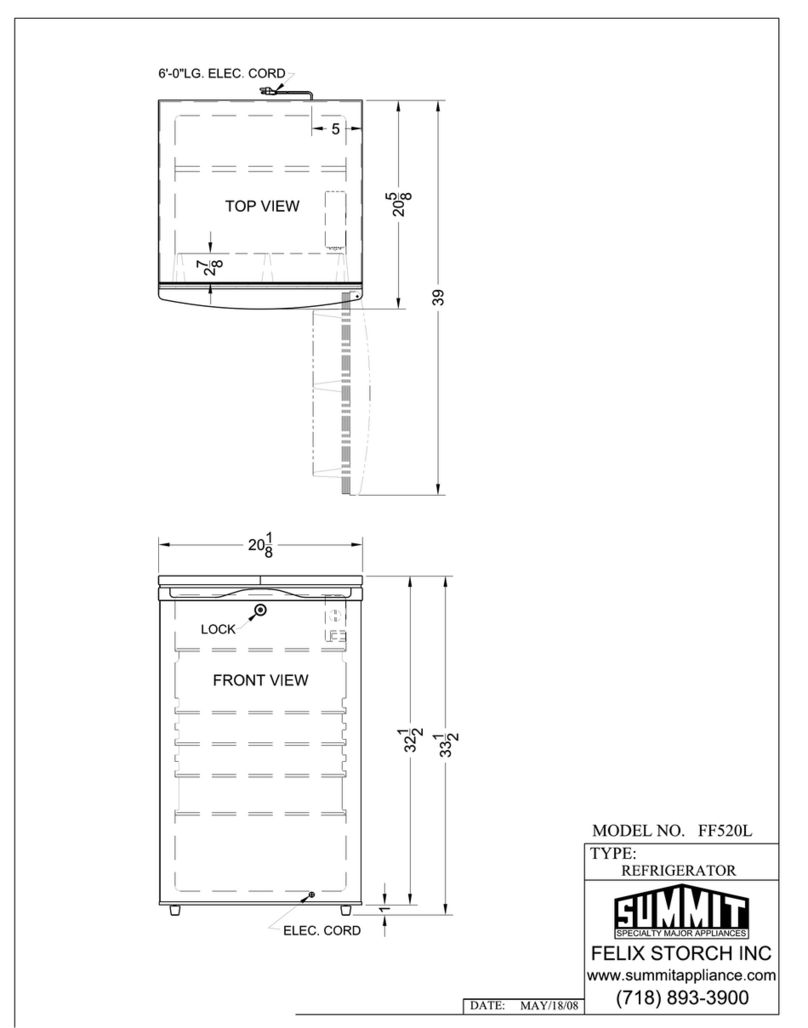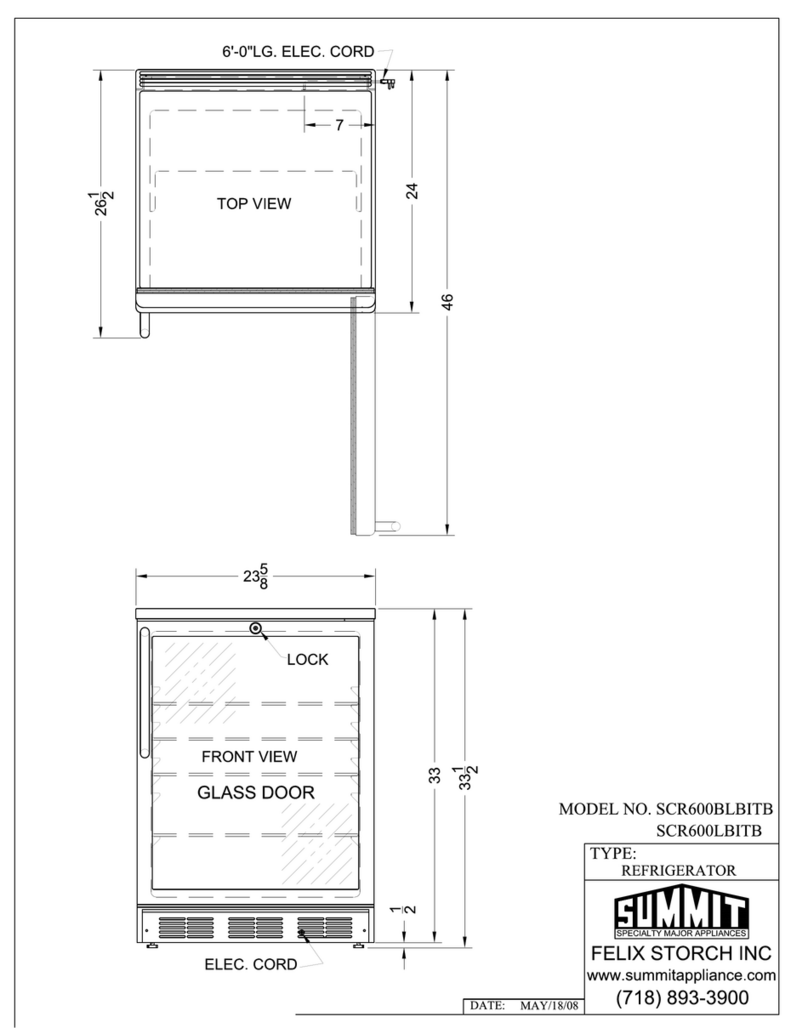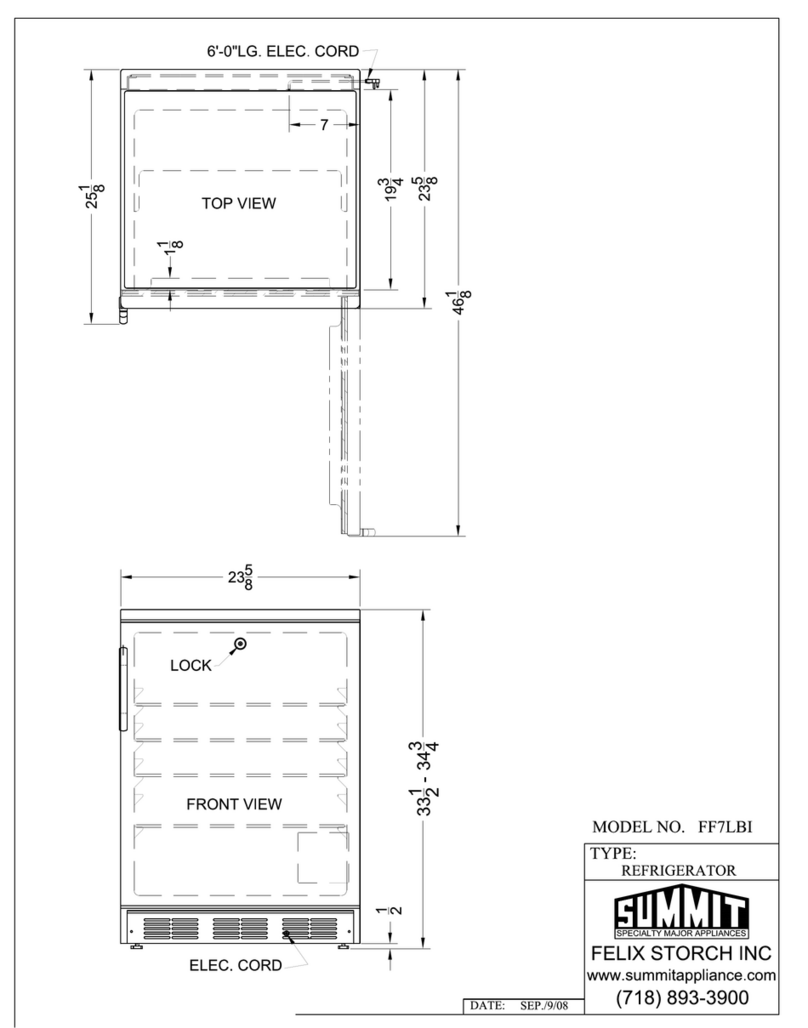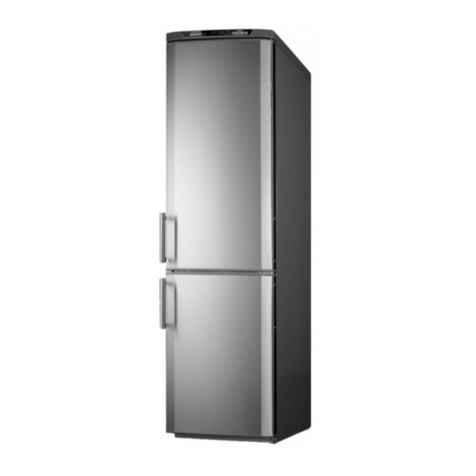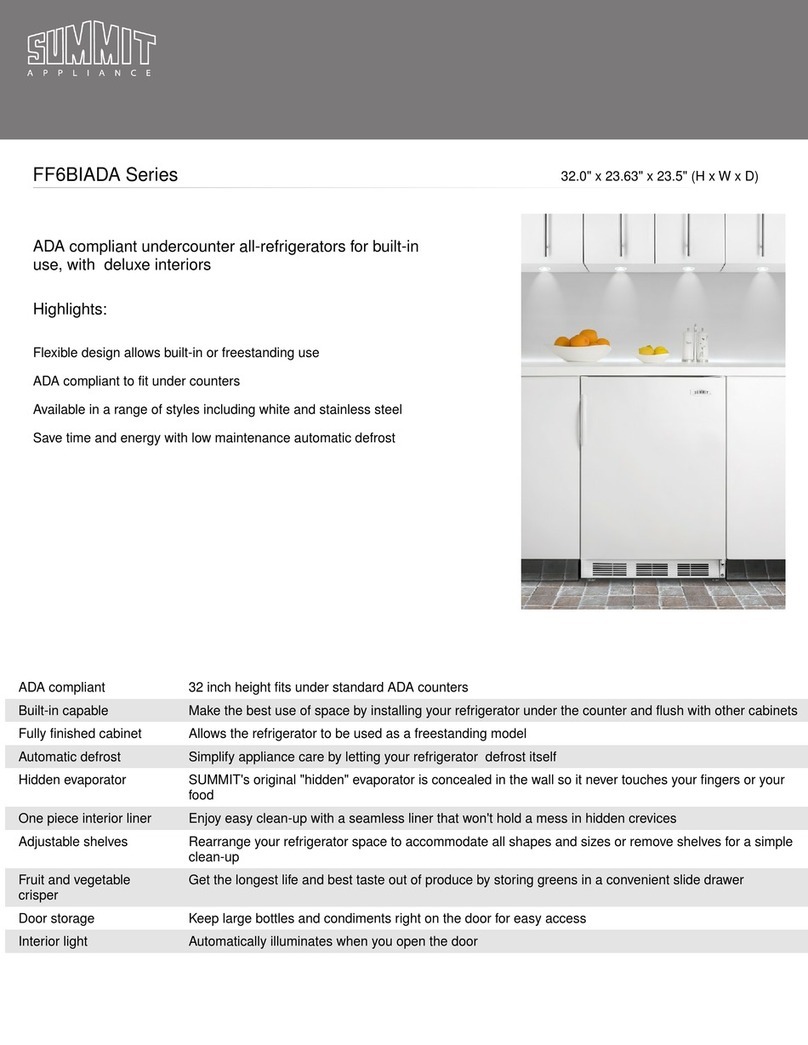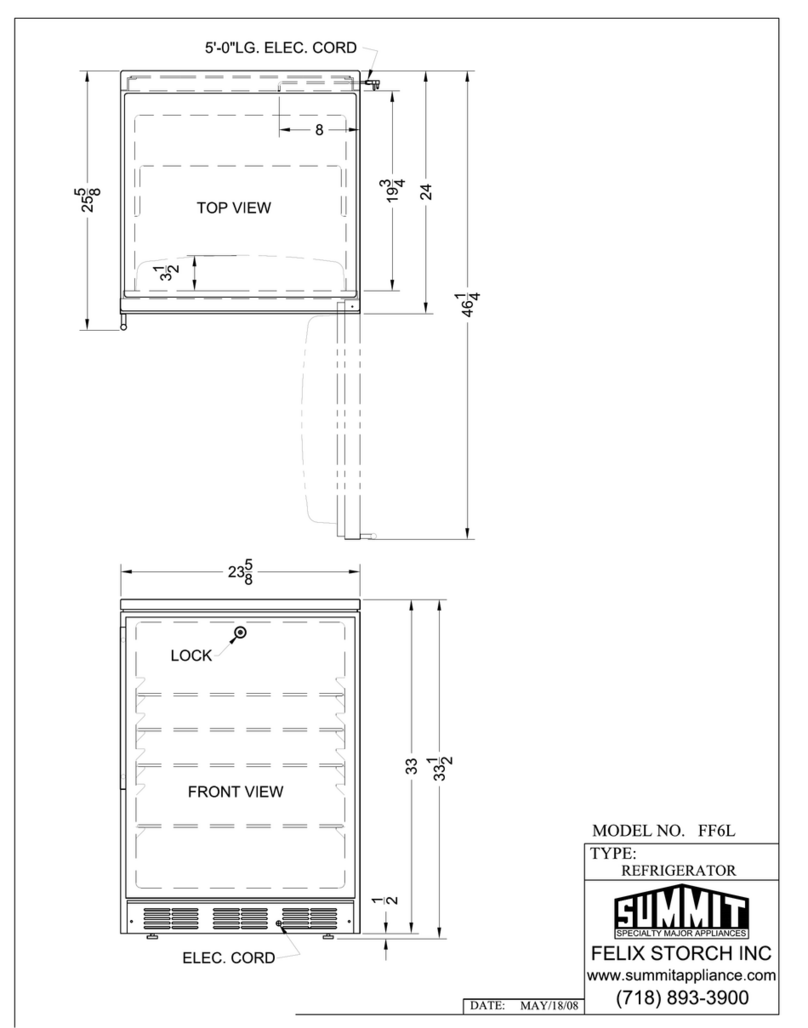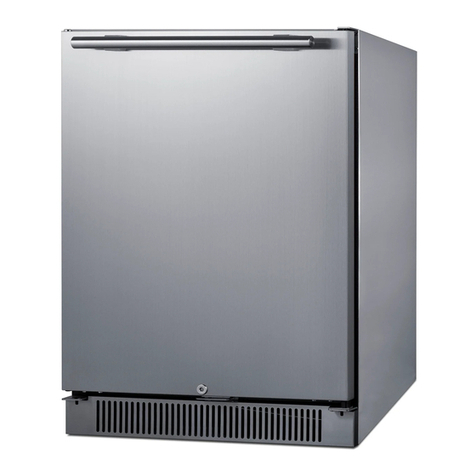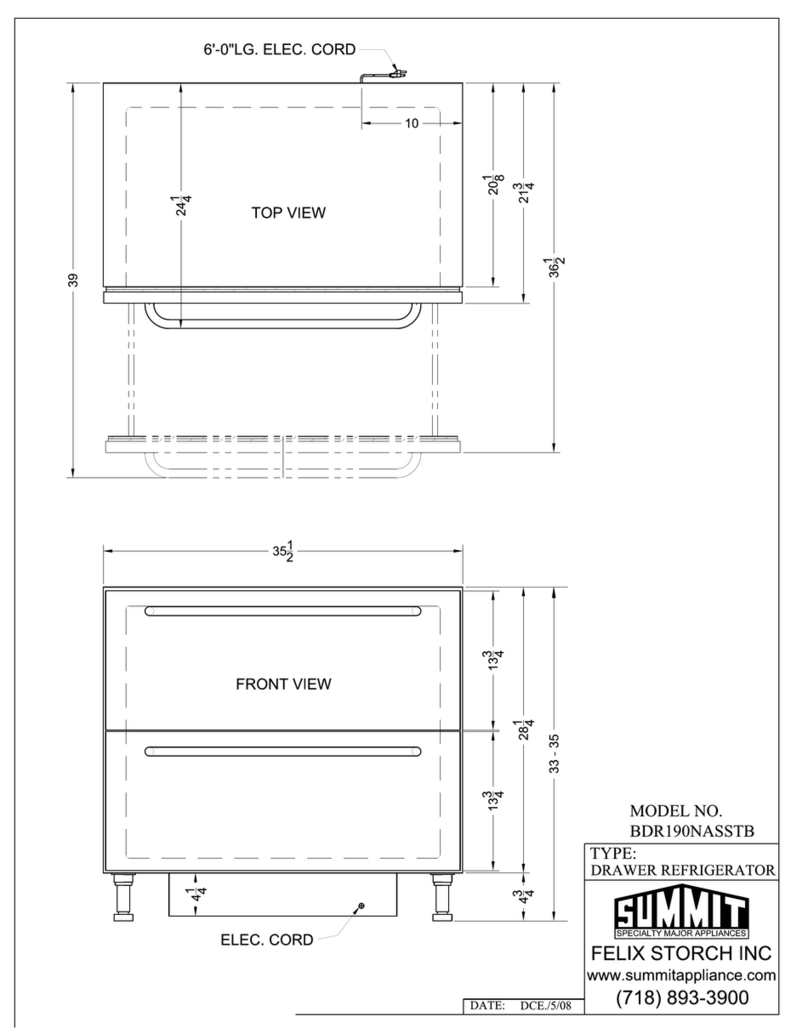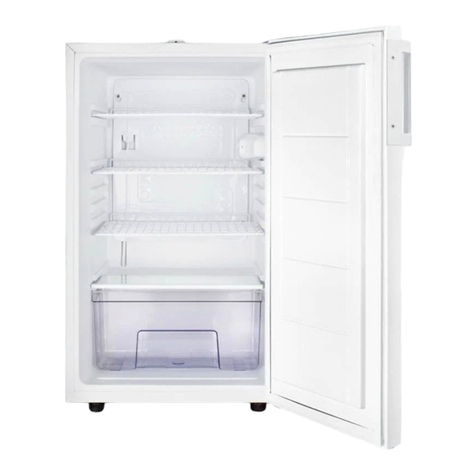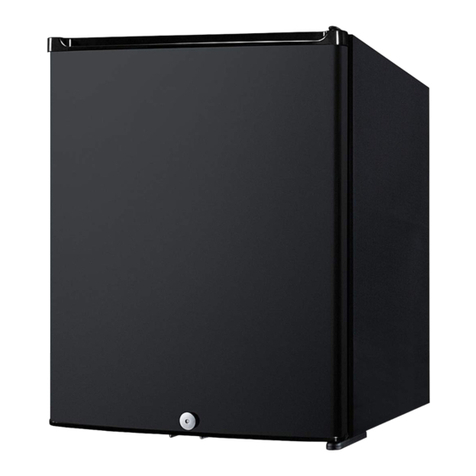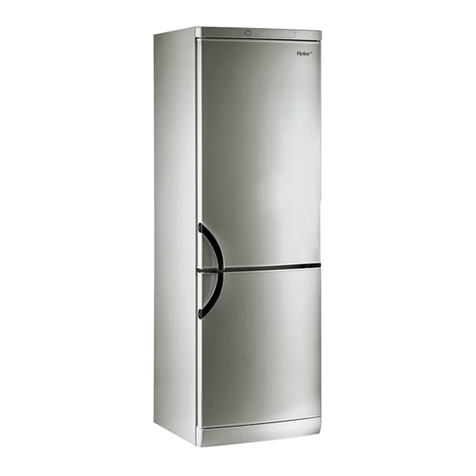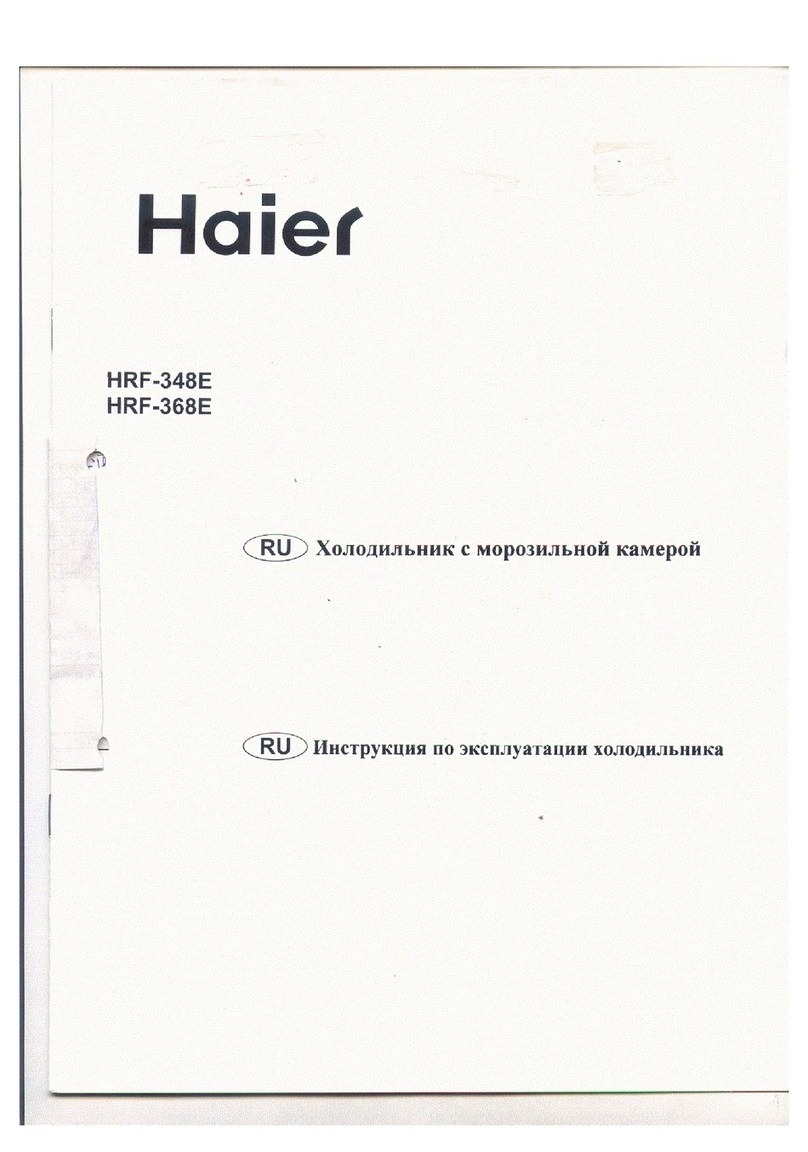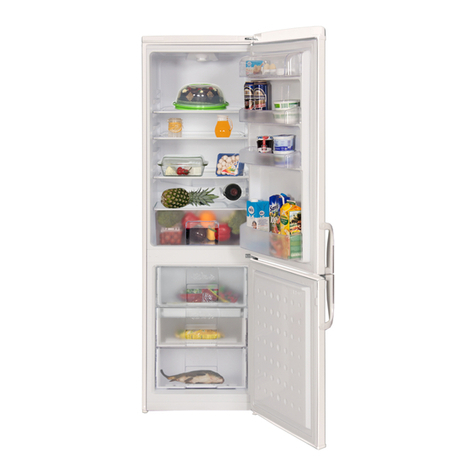4
•In the event of any damage:
oAvoid open flames and anything that creates a spark,
oDisconnect from the power supply
oAir the room in which the appliance is located for several minutes and
oContact the Service Department for advice.
•The more coolant there is in an appliance, the larger the room it should be installed in. In the event of
a leakage, if the appliance is in a small room, there is the danger of combustible gases building up. For
every ounce of coolant, at least 325 cubic feet of room space is required. The amount of coolant in the
appliance is stated on the data plate inside the appliance. It is hazardous for anyone other than an
Authorized Service Person to carry out servicing or repairs to this appliance.
•Take serious care when handling, moving and using the appliance to avoid either damaging the
refrigerant tubing or increasing the risk of a leak.
•Replacing component parts and servicing shall be done by factory authorized service personnel, so as
to minimize the risk of possible ignition due to incorrect parts or improper service.
FOLLOW WARNING CALLOUTS BELOW ONLY WHEN APPLICABLE TO YOUR MODEL
•Use two or more people to move and install appliance. Failure to do so can result in back or other injury.
•To ensure proper ventilation for your appliance, the front of the unit must be completely unobstructed.
Choose a well-ventilated area with temperatures above 44°F (7°C) and below 90°F (32°C).
•The appliance should not be located next to ovens, grills or other sources of high heat.
•The appliance must be installed with all electrical, waterand drain connections in accordance with state
and local codes. A standard electrical supply (115 V AC only, 60 Hz), properly grounded in accordance
with the National Electrical Code and local codes and ordinances, is required.
•Do not kink or pinch the power supply cord of the appliance.
•The size of the fuse (or circuit breaker) should be 15 amperes.
•It is important that the appliance be leveled in order to work properly. You may need to make several
adjustments to level it.
•All installations must be in accordance with local plumbing code requirements.
•Make certain that the pipes are not pinched, kinked or damaged during installation.
•Check for leaks after connection.
•Never allow children to operate, play with or crawl inside the appliance.
•Do not use solvent-based cleaning agents or abrasiveson the interior. These cleaners may damage or
discolor the interior.
•Use this appliance only for its intended purpose as described in this Instruction Manual.
•Keep fingers out of the “pinch point” areas. Clearances between the door and cabinet are necessarily
small. Be careful closing the door when children are in the area.
Risk of child entrapment!
Child entrapment and suffocation are not problems of the past. Junked or abandoned appliances are
still dangerous, even if they will “just sit for a few days”.
Before discarding your old appliance:
•Take off the doors
•Leave the shelves in place so that children may not easily climb inside.
- SAVE THESE INSTRUCTIONS -
